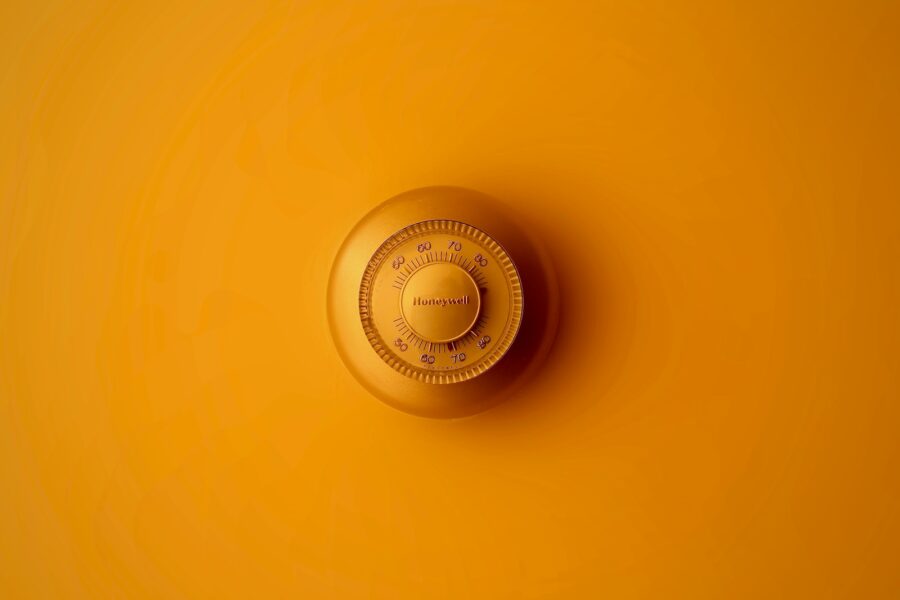If you work in an office, you have more than likely had some form of debate on the temperature. It’s too hot, it’s too cold, close the windows or open them up — there’s rarely an option to keep everyone happy. Situations such as these are increasingly common, with two in five people finding themselves in a workplace conflict over the office temperature.
As we approach the peak summer months and temperatures rise, these debates are starting to heat up once again. Ensuring that a comfortable and manageable temperature is kept within the workplace has proven links to well-being, productivity and employees openness to return to the office. In alarming new research, it is also said that by 2030, the predicted amount of work lost to impacts from heat stress is expected to rise beyond 2% each year. That’s an unmistakable economic impact that can’t be ignored, along with the health and wellbeing of workers themselves.
With temperature being an un-ignorable factor in the future of a functional, safe and happy workplace – how can office managers and facilities service providers ensure that the workplace is properly equipped?
Legal Requirements & Advise
You may be shocked to learn that despite classroom and watercooler rumours, there is no legally mandated temperature for an office, be that too hot or too cold. However, health and safety authorities do have a recommended and widely recognised best practice suggestion for when it comes to keeping workers healthy, safe and comfortable at work.
Studies have found temperatures around 23-24 ºC and above damage productivity, thus having a health impact on staff. The sweet spot advised by health and safety authorities is keeping the temperature above 16 ºC, and below that 23 to 24 ºC mark. Professional data has shown that a comfortable region of 20 ºC is a sound optimum temperature to aim for with some fluctuation based on things like humidity levels.
While there may not be a legally mandated temperature for the office space, health and safety laws can be triggered when it comes to keeping the workplace comfortable. While the requirements are somewhat broadly stated, keeping a workplace considered comfortable includes factors such as temperature, air quality and natural light, amongst others. If the business fails to adhere to providing and maintaining these requirements, they can be considered to be in breach of employment health and safety laws.
Breaches such as this can lead to both reputational and financial damage, along with legal action and sanctions. Employers should want to avoid any reports or complaints from employees.
Office managers are the custodians of equipping an office space, along with facilities service providers, with the ability to maintain a comfortable and functional environment. A collaborative relationship between the two, with the sharing of knowledge and requirements, will accelerate the ability in providing such a space for employees. Ensuring the business adheres and maintains good practices when it comes to things such as office temperature, helps nurture a happy, safe and comfortable workforce, with a clear set of wellbeing principles.
Tips for Keeping the Office Cool
While its great practice to monitor the temperature of the office space, ensuring everyone is cool and comfortable in the hot summer weather, what can we all do to keep cool? Simple basic things like staying hydrated with water regularly can make a big difference to your body temperature and how temperature is felt. On hotter days, and where possible, try to work in cooler or more shaded parts of the office that are less exposed to direct sunlight.
A tip that may sound surprising is telling people to keep the windows closed on hot days, during the hottest part at least. On a hot summer’s day, the temperature outside will very often actually exceed the temperature inside the office building. By opening the windows, you actually expel the cooler air that has built up overnight or in the cooler mornings, and rushes in the warmer uncomfortable air of the outside. If you do wish to air out the space with some fresh air, it’s always best to do this first thing, early on a morning to avoid that built up external air being too warm.
While it’s not great to work in the dark, if you’re having issues with direct hot sunlight, closing the blinds can help elevate some of the impactful heat.
Technology for Temperature Monitoring
There is a whole range of suitable technology and equipment available to office managers and facilities service providers to help monitor, adjust and measure workplace temperatures. A key consideration before implementing any such technology is the accessibility and usability by a wide range of staff with varying degrees of technical ability.
For the workplace to be truly accessible, the equipment that helps keep a comfortable and safe space should be accessible as such. The simple and classic factory act thermometer is both a cost effective, and very easy-to-use piece of temperature equipment. It provides an easy-to-view visual indication of when temperatures are heating up past those top height recommendations and knowing when it’s time for action. Especially handy for the summer months as humidity plays a large role in the feel of a workplace, comfort thermometers are great to equip an office space with.
These measure not only the heat temperature, but also the humidity levels of a space, offering a more rounded reading of the comfortability of the space. Humidity affects things such as air quality so plays a large role in ensuring a rounded understanding of the optimum feel of the space. Having this rounded level of information at your disposal helps ensure that optimal temperatures and space quality is being maintained and adhered to continuously.
Conclusion
Office temperature will always be a point of discussion for watercooler moments around the office, but it’s important for office managers to be equipped with the knowledge and technology to facilitate the optimum working temperature. Yes, as discussed there is no legally mandated temperature brackets, but as per health and safety advisal we should all seek to create a comfortable, accessible and safe environment for our workforces.
Navigating the choppy waters of the office temperature debate, especially as we heat up into summer, can only be chartered with a sound understanding of the rules, people’s needs and when a compassionate approach to wellbeing is implemented. Temperature technology is a great tool to fully and holistically understand and approach making positive changes.
Jason Webb
Jason Webb is the managing director of Electronic Temperature Instruments Ltd. He has been within the company for the last 15 years and took on the role of MD in January 2022, succeeding his father, Peter Webb. Jason continues to steer ETI to new growth and success as a landmark British manufacturer and exporter of temperature goods.



